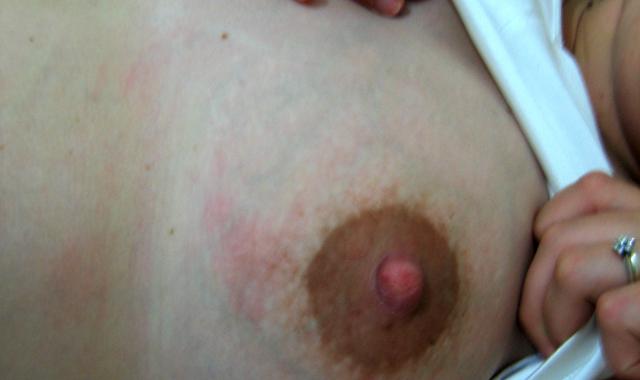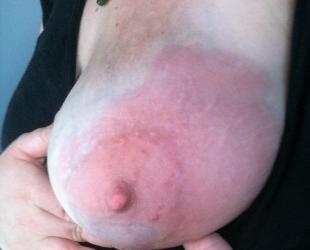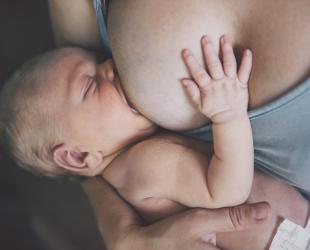Feeling a sore, lumpy breast while breastfeeding? Here’s how to ease inflammation and stay comfortable.

When breastfeeding is going smoothly, your breast feels comfortable and milk flows easily through tiny ducts to several small openings on the nipple. This helps your baby get the milk they need. But sometimes, the ducts and the tissue around them can become inflamed, which may cause discomfort.
You might hear this called ‘blocked ducts’, but research shows it’s not a blockage—just inflammation.
Signs of localised breast inflammation
You may notice:
- A single, firm lump
- An area that is lumpy or swollen
- The skin looks red
- It feels tender
- You feel pain when your let-down reflex happens
- It doesn't soften well after a breastfeed.
This is different to engorgement.

Why does breast inflammation happen?
Inflammation can happen at any time during breastfeeding but it’s more likely if:
- You go longer between breastfeeds
- Your baby sleeps for longer stretches
- Breastfeeds are rushed or your baby doesn't have a full feed
- Your baby isn’t removing milk well
- You’re making more milk than your baby needs
- There’s pressure on the breast (e.g. from clothing or sleeping position).
Relieving an inflamed breast
Start treatment as soon as you notice any signs. Keeping milk flowing and reducing the inflammation can stop it progressing to mastitis.
Before breastfeeding
Try these tips at the start of a breastfeed to help your your milk to flow:
- Apply warmth to the affected breast
- Try to relax
- Gently stroke your breast towards the nipple
- Make yourself comfortable - loosen your bra if needed.
When breastfeeding
- Feed your baby as often as they need.
- Check your baby is positioned and attached well.
- Start each feed on alternate breasts.
- If your baby isn't feeding well, you may need to express.
After breastfeeding
Use cool packs to relieve pain and inflammation
If your breast still feels full, hand express until it comfortable.
Handle your breast gently and continue these steps until it feels better. Sometimes it can take a few days for the inflammation in your breast to reduce. It may feel slightly less sore after each feed.
Know the signs and symptoms of mastitis so you know when to seek help.
Preventing future inflammation
Some mums get inflamed breasts more often. If It happens again, it may help to think about how you are breastfeeding or expressing.
- Feed your baby as often and for as long as they need.
- Get help with breastfeeding if your baby is not removing milk well.
- If you need to express, aim to express only as much breastmilk as your baby needs.
- Treat sore or damaged nipples.
- Make sure there is no pressure on your breasts.
- Rest when you can, eat well and drink to your thirst.
© Australian Breastfeeding Association October 2025.


